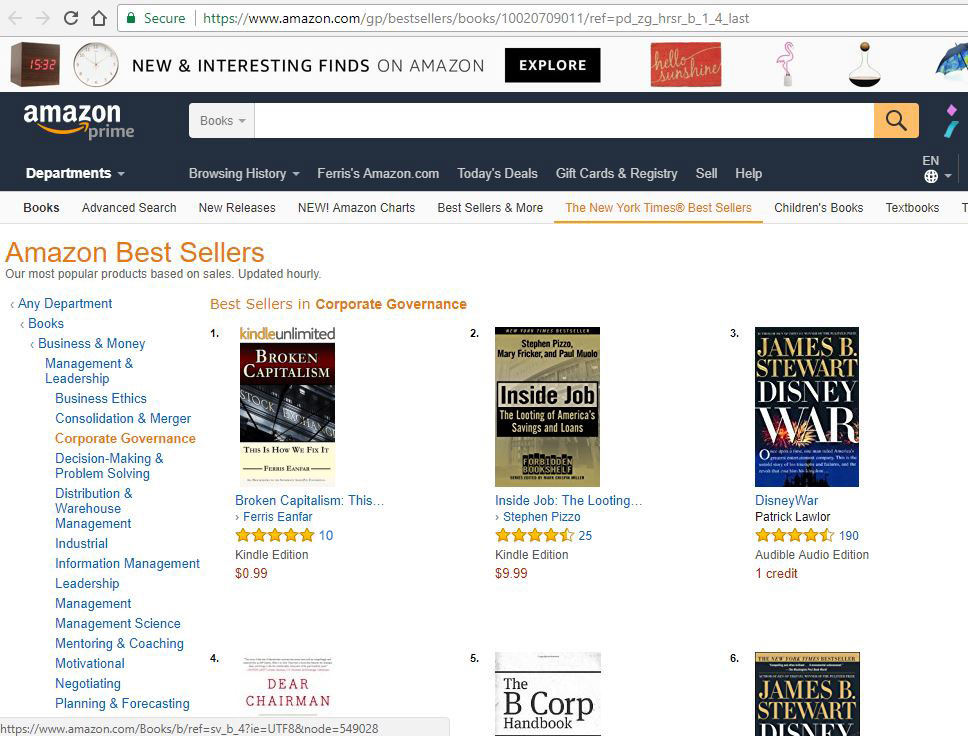Too Much Debt. The total private debt-to-GDP ratio in the United States was nearly 300% by the time the Great Depression started in 1929. In fact, “never before in this country had such a volume of funds been available at such low rates for such a long period,” said Harry Jerome in Mechanization in Industry (1934). The reasons for all this debt throughout the economy are damning indictments of the evils of profligate central banking. In particular, the individuals in the U.S. Congress, White House, and the Federal Reserve made a conscious choice to:
Allow Banks to Operate with Absurdly Low Capital Ratios. Banks and stock brokers were fueling this debt bubble by extending loans at a 90% Loan-to-Value (“LTV”) to virtually anybody with a pulse, which means corporations and stock market speculators only needed 10 cents for every dollar of stock they purchased. The Fed essentially gave over 10,000 commercial banks the tools, cheap cash, and an implicit mandate to extend the concept of fractional reserve banking to an entire fractional reserve economy. This meant that ordinary traders and citizens who didn’t have any meaningful financial risk management experience were suddenly awash in cheap cash and debt and were speculating in markets that nobody really understood. Nobody understood them because the debt-binge party was distorting all the essential supply and demand signals that investors must be able to see so they can make rational and accurate investment decisions.
Allow Banks to Use Depositors’ Money for Stock & Bond Market Speculation. The largest commercial bank in the nation during the 1920s and 1930s was National City Bank (operating today as the banking behemoth Citibank), which was led by the infamous bank President Charles E. Among other bankers without a moral compass, Mitchell was one of the most aggressive advocates of the reckless practice of “using other peoples’ money” to speculate in stock and bond markets. By ingesting deposits from millions of average Americans and betting that money on over-heated stock and bond markets (which the bankers caused to over-heat), Mitchell and his banking brethren on Wall Street were directly responsible for the 1929 stock market crash. Only 1% of the American population participated in the stock market, but these archetypal greedy bankers sucked virtually the entire American population into the Great Depression by losing the deposits of millions of Americans, which led to frozen credit markets, cascading loan defaults, and viral bankruptcies across the nation, among other toxic consequences. For these reasons, Senator Carter Glass, co-author of the Glass-Steagall Act in 1933, said, “Mitchell more than any 50 men is responsible for this stock crash.”
Eviscerate the Federal Reserve Act to Inject Monetary Opiates Into the U.S. Economy. Several amendments to the Federal Reserve Act shortly after 1913 enabled the Fed to use an infinite and self-spawning stream of government bonds (debt) as “collateral” on the Fed’s own balance sheet. This spawned the twin monetary opiates of “monetary stimulus” and “quantitative easing.” From this point until the present day, the entire U.S. and global banking system has been almost completely disconnected from the rational sound money policy that was memorialized in the original Federal Reserve Act of 1913.
Transform Citizens Into ATM Machines. The amendments to the Federal Reserve Act transformed U.S. citizens into ATM machines for the U.S. Government: Now career-minded politicians could create an unlimited number of Treasury Bonds while the U.S. Treasury could use the law enforcement power of the U.S. Government to wantonly tax U.S. citizens to pay for generations of special-interest-driven wars; dozens of secret regime change adventures; wasteful, special-interest-driven corporate welfare programs; and all manner of taxpayer-subsidized special-interest-driven waste, fraud and abuse. This is the malignancy that still actively corrupts the U.S. Democracy, keeps the party-dominated political machines in power, and perpetuates the Political and Economic Toxic Cloud to this day.
 Launch the Liberty Bond Ponzi Scheme. Between 1917 to 1919, the Federal Reserve created about $500 billion (in 2016 US Dollars) of “Liberty Bond” debt. The Fed then dumped all this money into the U.S. banking system to primarily support the war-fighting economies of the Allied Powers during World War I and the post-war European reconstruction era. Up to that point, this was the most sophisticated and widespread government propaganda campaign in U.S. history, which included a wild selling-spree of Liberty Bonds to sub-prime buyers throughout the country to finance the foreign war.
Launch the Liberty Bond Ponzi Scheme. Between 1917 to 1919, the Federal Reserve created about $500 billion (in 2016 US Dollars) of “Liberty Bond” debt. The Fed then dumped all this money into the U.S. banking system to primarily support the war-fighting economies of the Allied Powers during World War I and the post-war European reconstruction era. Up to that point, this was the most sophisticated and widespread government propaganda campaign in U.S. history, which included a wild selling-spree of Liberty Bonds to sub-prime buyers throughout the country to finance the foreign war.
Create a Toxic Money Supply to Fuel Intoxicating Demand. The vast majority of Americans were vehemently against sending their young men to die on the other side of the planet; and they certainly had no unquenched passion to financially support a war that had nothing to do with the United States. However, the career-minded politicians responsible for the U.S. going to war didn’t care if Americans had any money or desire to purchase the Liberty Bonds. The Fed simply loaned retail banks nearly unlimited amounts of Ponzi money to re-loan nearly 100% of the purchase price (i.e., nearly 100% loan-to-value) of the Liberty Bonds to U.S. citizens, who then used these personal loans to buy the toxic bonds.
Spawn Infinite Self-Collateralizing Debt. Artificial and rapid inflation of the U.S. banks’ balance sheets choked the entire global economy with cheap Ponzi money. The banks were allowed to sell their own Liberty Bond holdings back to the Federal Reserve through “open-market operations.” The Fed used this mechanism for the first time in U.S. history to create even more fictitious collateral to support ever-more Ponzi money printing and Liberty Bond selling. The result was a perpetual cycle of Ponzi money printing, rapidly rising and self-collateralizing debt, more Liberty Bond selling, more bank debt inflation, more consumer debt inflation, more Ponzi money printing, more deadly war machines, ad infinitum.
Use Liberty Bonds to Perpetuate a $4 Trillion War Started by a Teenager.1 The publicly declared purpose of the blitzkrieg of Liberty Bond-buying was “to show our patriotic support to our brave soldiers fighting for us in the Great War.”2 This “Great War” was started by a lone Serbian teenager who assassinated an obscure, unpopular European duke of a country that had no meaningful power or influence to threaten the United States.3 Further, this Great War was already nearly over due to the mutual exhaustion of the warring nations by the time the U.S. entered the war in 1917. A nonpartisan, rational analysis of the economic and political outcomes of WWI certainly confirms that there is no “domino theory” or any rational geopolitical analysis that could possibly justify the United States spending at least $600 billion (in 2016 USD) on centuries-old European squabbles that had so little actual consequence to the American people.
Provide Cheap Money to Large U.S. Banks to Gobble Up High-Yield Foreign Bonds. This is how U.S. banks financed and profited from the war debts of European countries long before the U.S. entered World War I; it’s also how the banks financed and profited from European reconstruction debts long after the war. This indirectly subsidized an unprecedented expansion of U.S. exports between 1914-1929. The United States became the manufacturer and grocery store to the world as European nations used the loans from U.S. banks to buy more U.S. goods and services. If you’re a U.S. bank or an unethical war profiteer incapable of grasping The Tragedy of the Commons Problem, that was a pretty good racket. But if you’re a dead teenage soldier rotting face-down in a putrid foxhole along the Maginot Line between France and Germany, it wasn’t such a good deal.
In the next part, “What Caused the Great Depression? (Part 3),” we will explore the most significant banking regulation and economic policy blunders that transformed a manageable recession into a raging Great Depression.
Notes:
1. The Allies and Central Powers collectively spent approximately $208 billion on World War I, which is nearly $4 trillion in 2016 USD. The flash point that formally triggered World War I was the assassination of Archduke Franz Ferdinand of Austria by 19-year-old Gavrilo Princip in Sarajevo on 28 June 1914.
2. This quote is paraphrased from dozens of deceptive and emotionally manipulative propaganda statements that proliferated from the U.S. Government and large retail banks during the Liberty Bond Program.
3. I understand this is a gross simplification of the many variables that culminated into World War I, but all those variables boil down to the same reality: The Central Powers did not present any significant existential or economic threat to the United States and the warring European nations should have been compelled to resolve their territorial disputes by themselves. Moreover, the U.S. could have accomplished all the usual strategic Realpolitik objectives by withholding its financial and political support for both sides of the war for as long as necessary until all the combatants agreed to an armistice and good-faith democratic reforms in exchange for impartial reconstruction loans to all combatants. Unfortunately, because of the U.S.’ entangling alliances and corresponding conflicts of interest, which resulted in unrealistic demands and reparations imposed against the Germans in the aftermath of World War I, World War II became inevitable.
About Ferris Eanfar
Ferris Eanfar has over 20 years of experience in technical, financial, media, and government intelligence environments. He has written dozens of articles and several books in the fields of Economics, Crypto-Economics, and International Political Economy, including Broken Capitalism: This Is How We Fix It and GINI: Capitalism, Cryptocurrencies & the Battle for Human Rights and the Global Governance Scorecard. Ferris is a cofounder of the Gini Foundation, which builds unique cryptocurrency systems to protect human rights, among other benefits; and the CEO of the AngelPay Foundation, a nonprofit financial services company with a mission to “return wealth and power to the creators of value.” To learn more about Ferris, please visit the About Ferris page.Visit Ferris on:

 Gini Website Coming Soon. We (
Gini Website Coming Soon. We (
